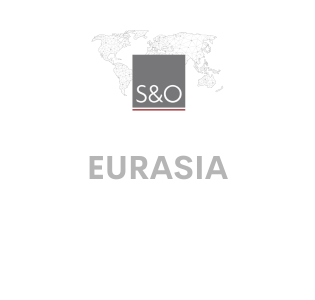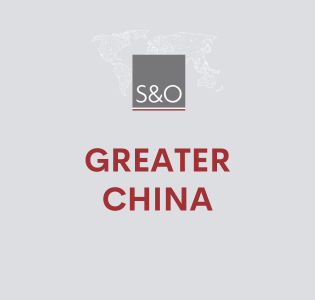TRADEMARK DISCLAIMER PRACTICE
6 Jul 2023
Vietnam
share
Trademark disclaimer is a common practice in many countries in the world. A trademark disclaimer indicates a specified element or elements of the registered mark for which the trademark owner does not have the exclusive trademark rights. According to the Trademark Manual of Examining Procedure of the USPTO, a disclaimer is “a statement that the applicant or registrant does not claim the exclusive right to use a specified element or elements of the mark in a trademark application or registration.” In any countries where the trademark disclaimer practice applies, the purpose of a disclaimer is to specify the non-distinctive element(s) within a mark that is non-registrable standing alone, and limit the scope of protection of the mark as a whole without separate protection of the non-distinctive element(s). Likewise, the trademark disclaimer practice has applied in Vietnam for the same purpose and with similar principles, although there are no trademark disclaimer-related provisions stipulated in the IP law of Vietnam.
What is Trademark Disclaimer and Disclaimer language according to Vietnam’s IP laws and regulations
As discussed in the segment above, currently there are no trademark disclaimer definitions or disclaimer-related provisions stipulated in the IP law of Vietnam, although the Intellectual Property Office of Vietnam (IPVN) has applied the trademark disclaimer principles in its trademark examination practice since the early 2000s. Until the year of 2018, the trademark disclaimer practice has been officially stipulated in a sub-law document guiding the implementation of the IP law in Vietnam, i.e. the Circular No. 16/2016/TT-BKHCN effective as of 15 January 2018, written as “If the trademark has elements ineligible for separate protection (to be disclaimed), the notice shall specify that the application is granted, explain ineligibility for separate protection and that the applicant may express his/her opinion within 03 months”.
The general wording below implies a trademark disclaimer request imposed by IPVN, which is included in notices for granting registration for marks containing one or some separate element(s) that is/are unregistrable standing alone: “The applied trademark is protected as a whole. The element(s) of […] is/are not separately protected.”
Which part of a mark may be disclaimed from separate protection in Vietnam
A disclaimer request will be imposed on a portion of the mark that contains generic or descriptive or any other inherently non-distinctive elements, and not the mark in its entirety. If the mark is entirely unregistrable, this mark will be refused instead.
Currently, there are no regulations guiding the determination of elements that may be subject to a trademark disclaimer. However, under the practice of examination in Vietnam, the following non-exclusive elements are highly likely to be subject to disclaimer:
· Simple shapes and geometric figures, numerals, letters, or scripts of uncommon languages;
· Signs indicating the geographical origin of goods or services;
· Signs indicating the quantity, quality, properties, ingredients, use, value, or other characteristics descriptive of goods or services.
How to tackle a Disclaimer request according to Vietnam’s IP laws
The disclaimer-related provisions we discussed above indeed focus on guiding how IPVN notifies the substantive examination results in case a part of a mark does not meet the protection criteria and officially setting out a timeframe for the applicant to respond to such notice rather than stipulating the disclaimer implementation in details. However, this is still a good step forward, as prior to 15 January 2018, applicants were not entitled to respond to IPNV’s disclaimer requests. Back then, if any applicant disagreed with the disclaimer request from IPVN, they needed to allow the trademark application to be granted protection first, then proceeded to appeal the disclaimer part of such granting decision, meanwhile, the appeal proceedings in Vietnam are generally cost- and time-consuming.
Under the current regulations and practice, IPVN will state their disclaimer request when they issue the notice of granting protection of the mark containing the element to be disclaimed, and there are two options for the applicant to choose as follows:
Option 1: The applicant agrees with the disclaimer by paying a granting fee for the issuance of the certificate.
Option 2: If the applicant does not agree with the disclaimer request, they are entitled to file a response to argue against IPVN’s opinion.
Then IPVN will proceed with a re-examination of the application regarding the disclaimer as well as the response. If the applicant’s response is accepted, IPVN will issue a new notice for granting registration for the mark in which the disclaimer is removed. Otherwise, the IPVN will issue a notice stating their opinion and the applicant is required to accept the disclaimer request and pay the registration fees. If the applicant still does not accept the disclaimer, their mark will be finally refused and the applicant is entitled to appeal such refusal decision.
Scope of protection of registered Mark with Disclaimer
The trademark disclaimer plays a role as a limitation to the scope of protection of the mark. Accordingly, the owner of this mark will have exclusive trademark rights for the mark in its entirety and not separately for the disclaimed element. In terms of enforcement, the owner of the mark cannot prevent other third parties from using/registering the disclaimed element, but can take action in the event of any other trademark that is confusingly similar to the applied mark as a whole.






